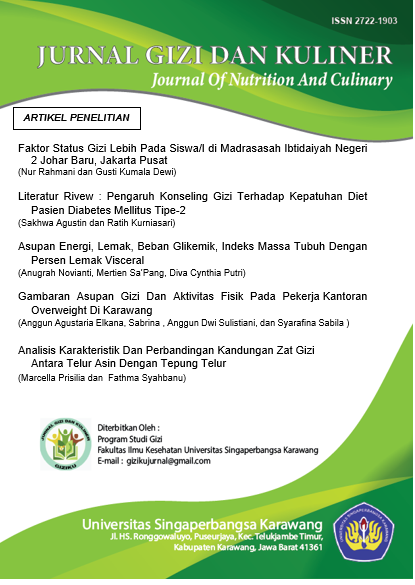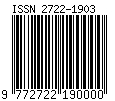Asupan Energi, Lemak, Beban Glikemik, Indeks Massa Tubuh Dengan Persen Lemak Visceral
DOI:
https://doi.org/10.35706/giziku.v4i1.9667Abstract
Central obesity is a condition of excess abdominal fat (central fat) which occurs due to lack of physical activity and an unbalanced diet so that more fat accumulation occurs in the abdomen (Visceral Fat). Central obesity also increases the risk of degenerative disease causing a reduced response of pancreatic beta cells to increased blood glucose. To determine the relationship between Energy Intake, Fat, Glycemic Load, Body Mass Index (BMI), and Percent of Visceral Fat in Type 2 Diabetes Mellitus Patients at Kebon Jeruk Public Health Center. This study used a cross-sectional design and a descriptive correlation study. The sample is about 62 respondents.
Data collection techniques used a 2 x 24-hour food recall questionnaire, BIA (Bioelectrical Impedance Analysis), glucometer, food photo books, and the Nutrisurvey application. Correlation tests showed that there are corre Energy Intake (p = 0.014), Fat Intake (p = 0.013), BMI (p = 0.006), and Glycemic Load (p = 0.035). Energy intake, fat intake, glycemic load, and BMI have a significant relationship with visceral fat percentages in type 2 DM patients.
Keywords: Central Obesity, Energy, and Glycemic Load
Downloads
Downloads
Published
How to Cite
Issue
Section
License
Copyright (c) 2023 The Journal of Nutrition and Culinary

This work is licensed under a Creative Commons Attribution-NonCommercial-ShareAlike 4.0 International License.











